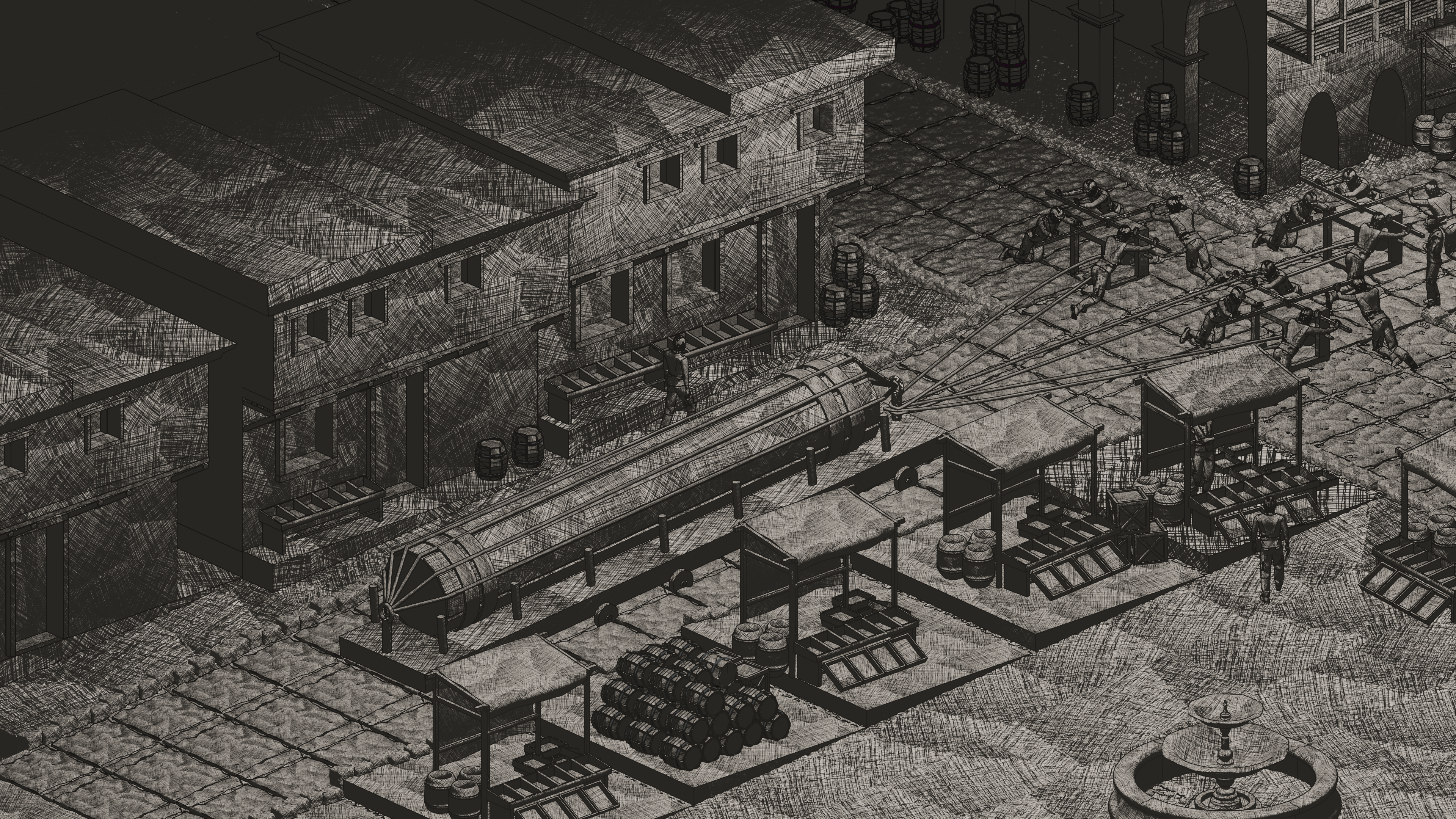Steep slopes:
The incremental ascent
The topography of Rome, characterized by hills, valleys, and a river, has greatly influenced the city's urban layout. The central area, the Palatine Hill, presented a challenge for transporting columns brought in through the Tiber River port, as they needed to ascend the hill. To aid in this task, Francesco's winches depicted on folios 2V and 5V were considered. Before positioning the cart on a slope, the road required preparation, particularly in open spaces like quarries or harbors that lacked infrastructure. Archaeologists have found stone blocks with carved ruts that acted as advanced roadways during the Roman era, minimizing wheel slippage and friction. Though not suggesting their existence in the early modern period, the benefits of implementing such ruts were acknowledged.

Shaping the slopes with rounded contours at the top and bottom was crucial to ensure smooth cart movement. Winches were strategically placed on elevated ground compared to the cart's position to prevent accidents in case of system failure. However, some illustrations showed winches at the base as a last-resort solution when space atop the hill was limited.
Animation
Maintaining a reasonable distance between the cart and winches, especially on long slopes, prevented excessive rope length and wear. An incremental ascent strategy involved moving the winches closer as the cart advanced, with temporary stops using rocks to immobilize the cart for winch detachment and reinstallation. This method ensured safe and efficient column transportation over hilly terrain.